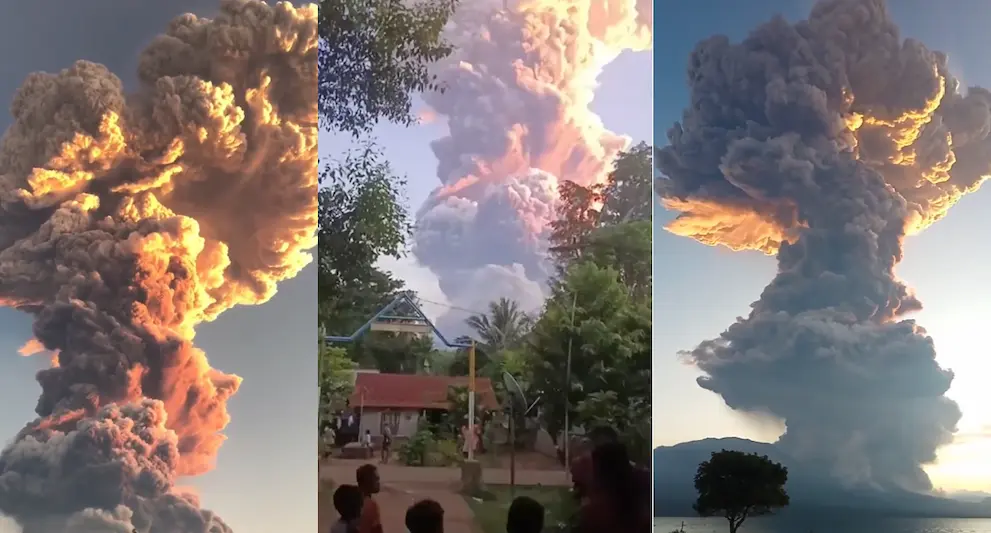
Mount Lewotobi Laki-Laki in Indonesia erupted on June 17, 2025, spewing a 10,000-meter ash plume and triggering the highest alert level
Nature’s Fury Unleashed Through Mount Lewotobi
On June 17, 2025, the skies above Indonesia’s Flores Island turned a menacing grey as Mount Lewotobi Laki-Laki erupted with explosive force. The volcano, part of the Lewotobi twin complex, hurled a colossal ash column 10,000 meters into the atmosphere, visible from over 150 kilometers away. The eruption was so intense that Indonesia’s Geology Agency immediately raised the alert to Level 4, the highest on the nation’s volcanic warning scale.
This wasn’t just a dramatic display of nature’s power, it was a full-blown crisis. The ash cloud, thick and mushroom-shaped, blanketed nearby villages and posed a serious threat to aviation. Bali’s I Gusti Ngurah Rai International Airport saw over 30 domestic and international flights cancelled, including services from Jetstar, Virgin Australia, and Air India. The disruption rippled across the region, stranding travelers and prompting airlines to monitor the ash trajectory closely.
But the danger wasn’t limited to the skies. Authorities expanded the exclusion zone to 8 kilometers around the crater, warning of potential lava flows—especially if heavy rains triggered lahar floods. The eruption followed a sharp uptick in seismic activity, with over 50 volcanic tremors recorded in just two hours.
Ground Zero: Evacuations and Emergency Response
As the ash rained down, emergency sirens wailed across East Nusa Tenggara. More than 450 families were evacuated from villages like Talibura and Maumere, where volcanic debris and tremors made conditions increasingly perilous. Temporary shelters equipped with clean water and electricity were quickly set up, but the fear of further eruptions loomed large.
Indonesia’s National Disaster Mitigation Agency (BNPB) issued urgent advisories, urging residents to wear masks and avoid riverbanks that could channel lava. The agency also warned that volcanic gases and ash could cause respiratory issues, especially among children and the elderly.
Despite the chaos, there were no immediate reports of casualties, a testament to the swift coordination between local authorities, volcanologists, and disaster response teams. Still, the psychological toll was evident. For many residents, this eruption revived traumatic memories of the November 2024 event, which claimed nine lives and displaced thousands.
The Bigger Picture: Living on the Ring of Fire
Mount Lewotobi Laki-Laki is no stranger to eruptions. Standing at 1,584 meters, it’s one of 120 active volcanoes in Indonesia, a country perched precariously on the Pacific Ring of Fire. This volatile zone is notorious for its seismic activity, and Lewotobi’s twin peaks, Laki-Laki (“male”) and Perempuan (“female”) have long been monitored for signs of unrest.
What makes this eruption particularly alarming is its timing and scale. Coming just months after a similar outburst in March, the June 17 event underscores the growing unpredictability of volcanic behavior in the region. Experts suggest that climate change and shifting tectonic patterns may be intensifying volcanic activity, though more research is needed.
For now, the focus remains on safety and recovery. Flights are expected to resume once the ash cloud dissipates, and volcanologists continue to monitor tremors around the clock. But for the people of Flores Island, the message is clear: life near a volcano demands constant vigilance.
Stay updated with the latest news on Rapido Updates. Keep yourself updated with The World, India News, Entertainment, Market, Gadgets, Sports, and many more..